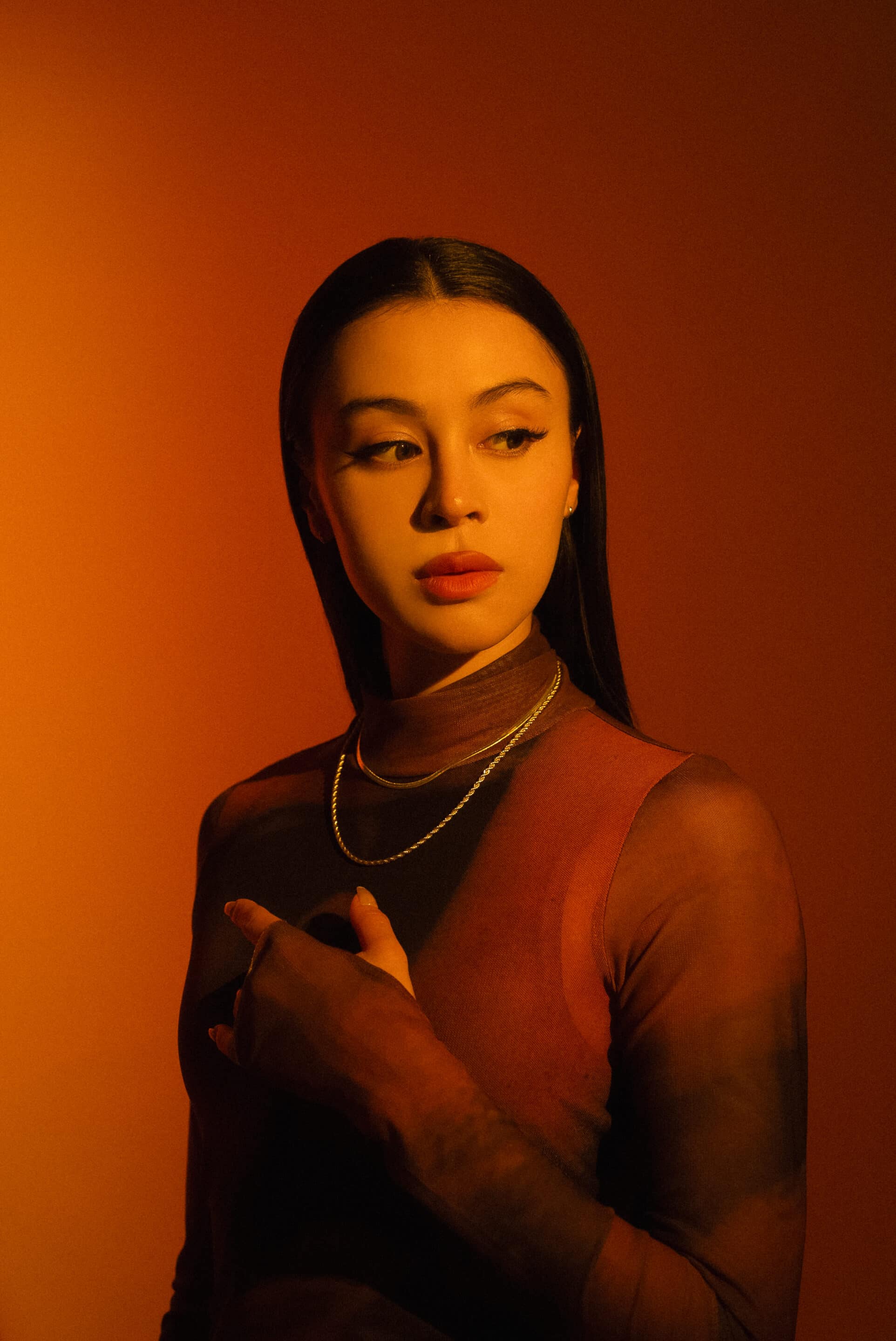An immersive sonic island where folklore, futurism, and emotion collide
In an era of endless singles and algorithmic playlists, SHIMA dares to do something bold — she builds a world. The Japanese-American electronic artist’s debut album, Welcome To SHIMAJIMA (out now via Young Art Records), is more than a collection of songs. It’s an act of world-building — a surreal, borderless landscape where sound becomes mythology and memory transforms into geography.
Across ten tracks, SHIMA invites listeners onto SHIMAJIMA, a fictional island that feels at once ancient and futuristic, foreign and familiar. With each song serving as a gateway to a new emotional terrain, the project plays like a guided voyage through a dream rendered in rhythm, color, and code.
“SHIMAJIMA is a fictional island that doesn’t exist in any specific location or time period. It’s inspired by many cultures and eras — a place that feels both foreign yet familiar, fresh yet nostalgic,” explains SHIMA. “It’s an invitation into the world I’ve created.”
The album’s sonic architecture is a mesmerizing blend of indie electronica, trap, house, and techno, infused with the emotional depth and storytelling traditions of Japanese folklore. Previously released singles like “THE MYTH OF KAMIKAZE (神⻛の神話),” “MAITAKE,” “EIYAA,” and “1807” laid the foundation — each a vignette of cross-cultural mythology. “Maitake” draws from a centuries-old tale of dancing mushrooms, while “1807” reimagines a traditional fishing song into a glimmering rhythmic trance. Elsewhere, “Sunset” captures a moment of stillness that reshaped SHIMA’s understanding of happiness, while “Shiawase” closes the album with layers of traditional chants and festival drums, embodying the Japanese ideal of profound gratitude and peace.
From Tokyo’s neon streets to the digital shores of her imagined island, Welcome To SHIMAJIMA is also a personal map of transformation. Born to an American father and Japanese mother and raised in Tokyo, SHIMA began her career as a J-Pop idol at just 14 before venturing to the U.S. to study Music & Computer Engineering at the University of Miami. That technical mastery, combined with her bicultural identity, gives her music its rare duality — equal parts ethereal and engineered, traditional and future-forward.
Now based in Los Angeles, SHIMA’s star has only continued to rise. Following standout performances at Coachella’s DoLaB, Electric Forest, and Miami Music Week, she celebrates her debut with a listening event at Haus Plant in Los Angeles on September 26, before embarking on a string of festival dates including Same Same But Different, Momentous Festival, and Hulaween.
Welcome To SHIMAJIMA is more than an album — it’s an ecosystem. A living, breathing world of rhythm, mythology, and emotion that invites listeners to lose themselves and, perhaps, rediscover what home can sound like.
📅 UPCOMING SHOWS:
• Sept 26 – Welcome To SHIMAJIMA Release Party – Los Angeles, CA
• Sept 28 – Same Same But Different – Lake Perris, CA
• Oct 11 – Momentous Festival – Bentonville, AR
• Oct 25 – Wicked Oak – Burnet, TX
• Oct 31 – Hulaween – Live Oak, FL
“Welcome To SHIMAJIMA” feels less like an album and more like an invitation to a parallel world. When did this island first appear in your imagination — and what was happening in your real life when it did?
I created this album after a long period of isolation, coming out of the pandemic lockdown after having just moved to LA. I’ve always been a foreigner and an outsider no matter where I lived for my entire life, but during this period I was especially lacking any sense of community or cultural identity. This is when the fantasy world-building began in my mind of a mythical island (SHIMA means “Island” in Japanese, and SHIMAJIMA would translate to “Island Island”, or “Shima Island”) with a completely made up culture of that is a blend of not only my own roots, but musical elements from around the world that I found fascinating and now had a reason to explore and dive deeper into.
You’ve called SHIMAJIMA “a place both foreign and familiar.” How much of it is fantasy — and how much is a reflection of your own identity, heritage, and displacement?
My sound definitely has sprinkles of real Japanese culture and tradition, but in no way could it be categorized as such. It’s definitely fantasy that is inspired mostly by my Japanese roots, but also folk music, instruments, and rhythms from around the world.
There’s a sense of mythology running through every track — dancing mushrooms, kamikaze winds, ancestral echoes. What draws you to storytelling as a form of electronic expression?
Something I always felt was missing and personally craved from the EDM genre as a listener, is good songwriting and storytelling. Lyrics and toplines always felt like an afterthought on most EDM tracks. This makes sense, as the genre is mostly dominated by producers as opposed to singers and songwriters. So I knew that by being able to do the latter, I had something unique I could offer to this genre that most other artists could not. I also genuinely love world-building and making songs that are more than just sonically pleasing bangers (not that there’s anything wrong with that at all). I think it also builds a stronger connection between the listeners and the artist when there’s a backstory or lore that they can get lost in beyond just the music itself.
Your production fuses indie electronica, trap, house, and techno — yet it never feels chaotic. How do you keep your sonic universe cohesive while exploring so many textures?
It’s very important for all artists to have their own distinct identity and recognizable “sound”. The most common way to achieve that is by sticking to a specific subgenre, but I wanted to create a sonic throughline throughout my songs that wasn’t based on genre. So instead of staying within a certain BPM range, drum pattern, or energy level (which are the typical constraints of EDM subgenres in my opinion), I decided to create consistency through instrumentation and sound design. From a business / marketing perspective, I know that genre-hopping is advised against (especially early on in your career) because it’s harder to build a recognizable “brand” that way, but I decided it was worth the risk when considering my overall happiness and longevity of my career, because I know that I would get bored and feel trapped forcing myself to stay within house, or trap, or any other subgenre.

The opener “Tour Guide” captures the fleeting energy of Shibuya nights. Did living in Tokyo change your understanding of connection and loneliness?
I grew up in a major international city going to international schools where people were constantly coming and going, and nobody was guaranteed to be permanent in my life. I had a new best friend once every 2-3 years for my whole childhood because every time I’d make a new best friend, they’d end up moving away as their parent’s sabbatical would end, their company would station them elsewhere, etc. etc. When I hit high school and began going out at night, everyone I’d meet were either tourists or business people just passing through. This kind of upbringing simultaneously made me a lone-wolf and a social butterfly, because I’d gotten really good at befriending strangers and forming new bonds quickly, but without ever letting myself get too attached because everyone eventually leaves. It wasn’t until I got out of that environment, and began interacting with people who grew up in small towns with the same group of people their whole lives that I began to reflect on my attachment style and realized that I’m not actually the “lone wolf” that I thought I was.
In “Shiawase,” you close the album on gratitude and joy — a rare ending in electronic music, which often fades into melancholy. What does happiness sound like to you?
I know there’s a stereotype that “happy” music sounds cheesy while “sad” music sounds more deep, but I actually think it’s the other way around. Sad or melancholic music often sounds cheap to me. Or self-indulgent, somehow. Personally, I find it a lot more challenging to create uplifting music that doesn’t sound like kid’s music, so that’s what I strove to achieve.
Many artists build albums; you’ve built a world. What does it take to maintain creative control while also leaving room for mystery and interpretation?
I really appreciate that, because I was definitely trying to world-build so it’s nice to hear that it came across. I’m definitely a control-freak when it comes to my music, and one tendency I have is to continue working on a song way after it’s clearly finished, because by admitting that it’s finished I’d have to let go of it and release it out into the world where I no longer have control over it. Allowing art to be “imperfect” because that’s actually what makes it great sometimes, and learning to be at peace with the fact that not everything is within my control is something that I am actively working on.
You draw deeply from folklore and mythology, yet the album feels futuristic. Do you see technology as an extension of tradition, or a rebellion against it?
The traditional music that I’m sampling and drawing inspiration from, like Awa Odori for example, is not sacred, religious, or aristocratic in any way. It’s folk music. It was music for the masses to get drunk and dance and have fun to, which is honestly not that different from dance music and rave culture today. I think they served similar functions in society. So I do see what I’m doing with folklore and folk music as an extension of the same base activities like socializing and celebrating in big groups that they were historically for.
You’ve spoken about cross-cultural inspiration — your music carries pieces of many worlds. How do you balance honoring those roots with creating something distinctly SHIMA?
Like I mentioned before, while it’s obviously important to treat any kind of “traditional” or “historical” piece of culture with respect and care, I don’t think it means we have to vacuum seal it off in a glass container not to be touched in a sterile museum somewhere. Because interacting with it and building upon it (with respect, of course) is how you keep it alive. The whole point of folk music is that nobody owns it. It’s like a big group project that evolves and grows as it gets passed down from generation to generation. My interaction with it is just one tiny contribution among millions to that big group project.
If listeners could visit SHIMAJIMA for one day — what would you want them to see, hear, or feel before they leave?
I want them to feel belonging. I want them to feel seen and to feel heard. Because that’s the reason why I created SHIMAJIMA for myself.





